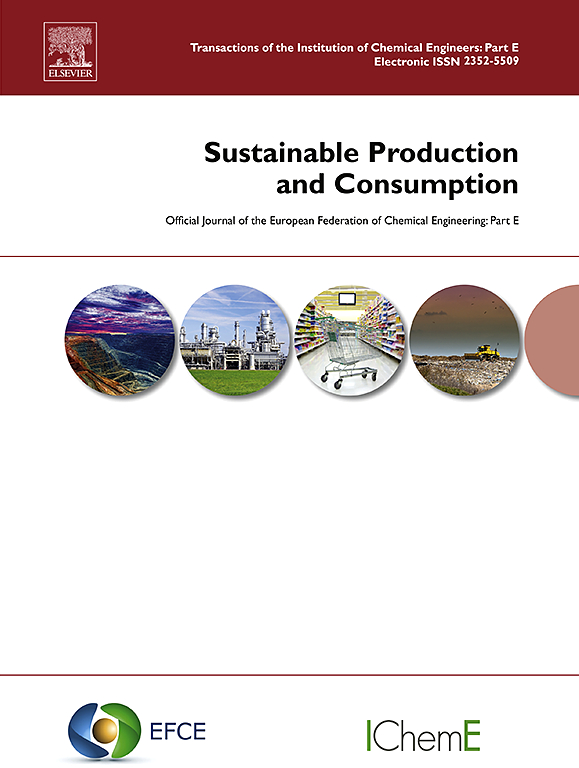农民对作物残茬利用、温室气体减排和作物残茬生物能源补贴的决策:基于主体的生命周期模型
IF 10.9
1区 环境科学与生态学
Q1 ENVIRONMENTAL STUDIES
引用次数: 0
摘要
为了进一步推进基于作物秸秆的生物能源(CRB)产业减缓气候变化,更好地了解利益相关者行为对温室气体(GHG)减缓潜力的影响至关重要。然而,利益相关者(特别是农民)的异质性和社会动态却很少受到关注。本研究将基于主体的环境与经济评价模型与生命周期思维方法相结合,建立了基于主体的环境与经济评价(AEE)模型。以黑龙江省为研究对象,运用AEE模型考察了利益相关者决策对CRB温室气体减排潜力和政府补贴的影响。情景分析探讨了粮食市场、补贴和收集距离对环境和经济结果的影响。研究结果表明,更多的农民愿意采用作物残茬收集技术,这主要是由于后勤方面的限制。影响采用的关键因素包括农业收入、年龄、农场规模和作物类型。CRB贡献了温室气体总减量的70.6%,而补贴仅为41.6%,显示出更高的缓解效率。综上所述,政府必须解决作物残茬物流的不足,以促进CRB的发展。此外,农业政策通过指导作物类型选择,在确保CRB原料供应方面发挥着至关重要的作用。结果表明,AEE模型能够很好地模拟CRB环境下的微观和宏观动态,突出了将基于agent的模型与生命周期思维方法相结合来研究复杂问题的鲁棒性。本文章由计算机程序翻译,如有差异,请以英文原文为准。

Farmers’ decisions on crop residues utilization, greenhouse gases reduction and subsidy of crop residue-based bioenergy: An agent-based life cycle model
To further advance the crop residue-based bioenergy (CRB) industry for climate change mitigation, it is crucial to better understand the influence of stakeholders' behaviours on greenhouse gases (GHG) mitigation potentials. However, the heterogeneity and social dynamics of stakeholders, particularly farmers, have received less attention. This study develops an Agent-based Environmental and Economic assessment (AEE) model that integrates agent-based model and life cycle thinking methods to simulate the CRB system. The AEE model was applied in Heilongjiang Province of China, to investigate how stakeholder decisions affect CRB's GHG reduction potential and government subsidies. Scenario analyses explore the effects of grain markets, subsidies, and collection distance on environmental and economic outcomes. The findings indicate that more farmers are willing to adopt crop residues collection than those currently practicing it, primarily due to logistical constraints. Key factors influencing adoption include farming income, age, farm size and crop types. CRB contributed to 70.6 % of overall GHG reductions with only 41.6 % of the subsidy, demonstrating higher mitigation efficiency. In conclusion, the government must address the deficiency in crop residues logistics to promote CRB development. Additionally, agricultural policies play a crucial role in ensuring CRB feedstock availability by guiding crop types selection. The results suggest that AEE model is adequate in simulating both micro and macro dynamics in the context of CRB, highlighting the robustness of integrating agent-based model and life cycle thinking methods to study complex issues.
求助全文
通过发布文献求助,成功后即可免费获取论文全文。
去求助
来源期刊

Sustainable Production and Consumption
Environmental Science-Environmental Engineering
CiteScore
17.40
自引率
7.40%
发文量
389
审稿时长
13 days
期刊介绍:
Sustainable production and consumption refers to the production and utilization of goods and services in a way that benefits society, is economically viable, and has minimal environmental impact throughout its entire lifespan. Our journal is dedicated to publishing top-notch interdisciplinary research and practical studies in this emerging field. We take a distinctive approach by examining the interplay between technology, consumption patterns, and policy to identify sustainable solutions for both production and consumption systems.
 求助内容:
求助内容: 应助结果提醒方式:
应助结果提醒方式:


